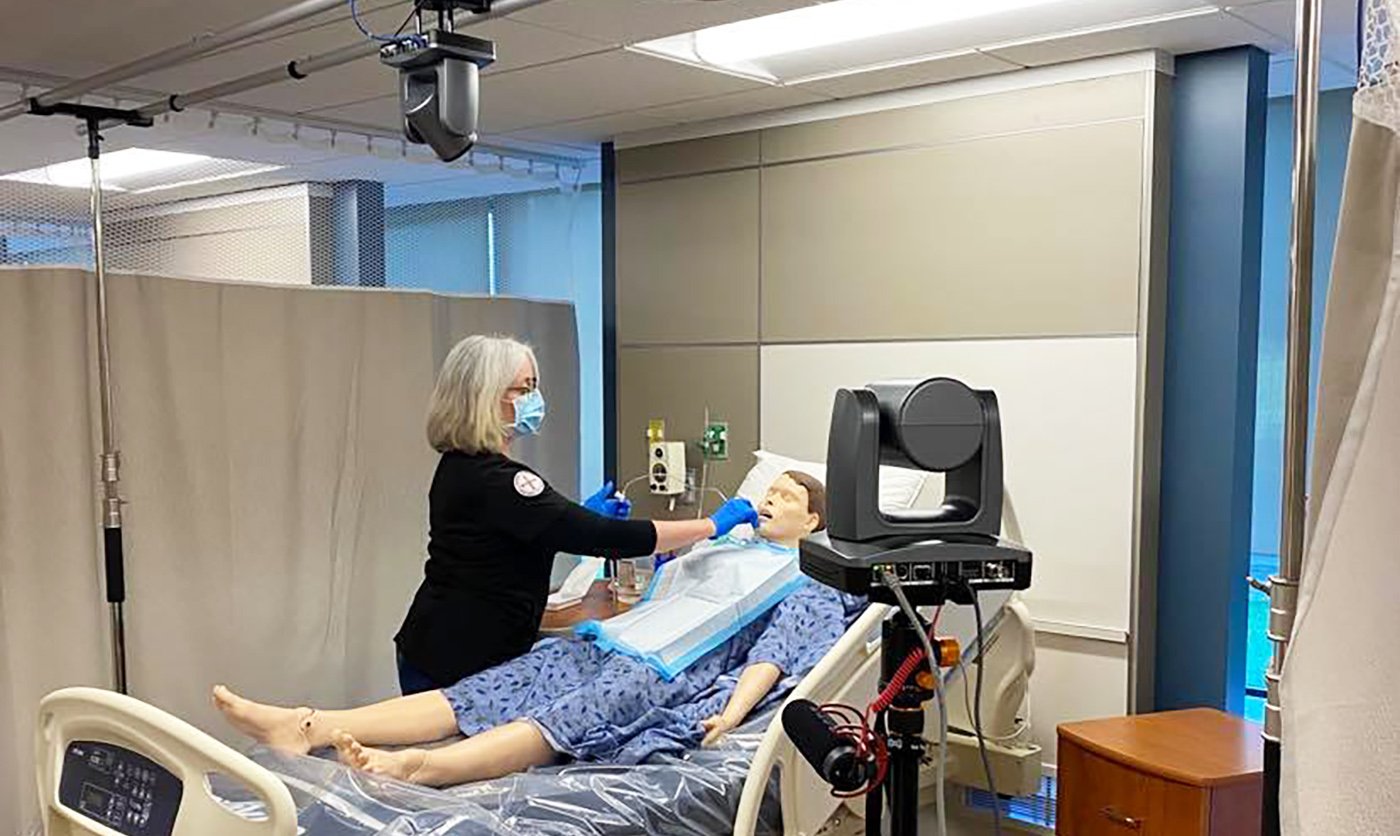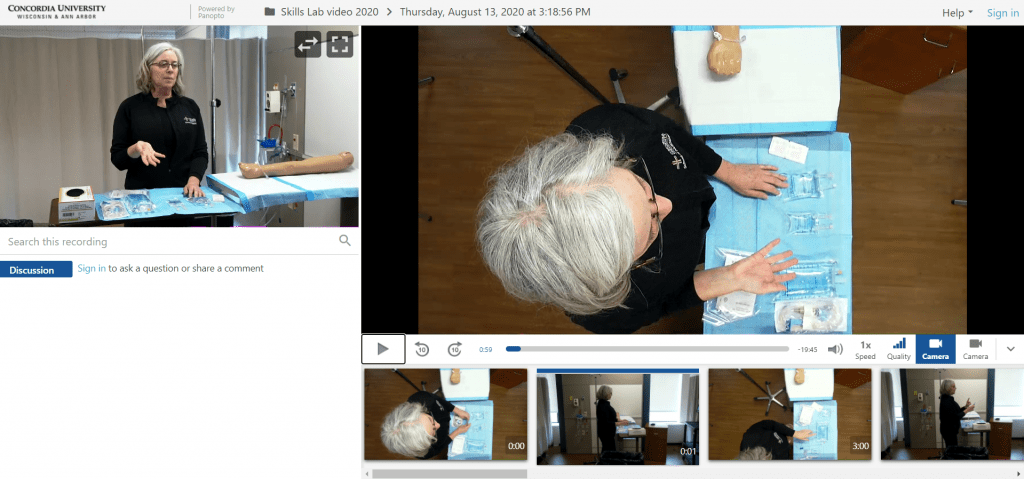
COVID-19 was certainly a pivoting point for higher education institutions across the country. But, the pandemic served as more of a catapult for a new way of learning for the School of Nursing at Concordia University Ann Arbor.
For the past 12-18 months, CUAA’s Ronald and Marvel Jones School of Nursing has been working on the development of enhanced virtual learning for their students. One of those enhancements being the mobile camera unit. SON had always had a state-of-the-art way to video capture lessons, simulations, etc. but the views offered a more simplified visual experience without mobile capabilities. Once COVID-19 hit, the need for a new system that could provide the best experience for those learning remotely was critical- so they buttoned up the final touches and launched- within weeks.
Mobile Camera Unit
The mobile camera unit is comprised of three cameras simultaneously directed at a patient that provides viewpoints from the ceiling, front, back, and sides of the room. Normally, using video systems like this for skill-based concepts can only provide 1:1 experience on YouTube- not full aspect at every angle. SON’s mobile camera unit system allows a streaming opportunity to a link of the virtual experience, as well as the ability to edit, embed quizzes/surveys, assign video lessons and discussion questions to students in blackboard, and create an interactive educational experience.

This system proved to be such a success that it continued to be used throughout the summer and not just during the COVID months for OB, Pediatric, Community simulations, and skill labs. Anytime there is a need for physical hands/expression in learning, this system can be used to record a similar experience online. Ben Oliver, IT guru of SON, stated, “We’re taking the foundation of educational experience and amping it up a level.”
And, the “amping up” hasn’t stopped there. Within the next few months, the SON also plans to start embedding information from the mobile camera unit into AR & VR headsets.
AR Headsets
AR (Augmented Reality) experience headsets will allow students to visually scroll over a sensor/url code of a 3D image that can be manipulated by their physical reactions or voice and take them as far as their imagination can go. For example, SON plans to use AR to enter a 3D world where the simulation mannequins are enhanced with even more assets that can only be visible while wearing the AR lenses, such as sweating, skin color changes, and swelling.
VR Headsets
VR (Virtual Reality) experience headsets will allow students to enter a built world that can be manipulated by their fears, anxieties, etc. For example, the student could put on a headset and be in the middle of a body dissection with other students from around the world- allowing enhanced interaction. The eventual goal of SON is to be able to host multiple classes through VR where the student can interact with other students to peel apart a glorified human body.
And, the “amping up” hasn’t stopped there. Within the next few months, the SON also plans to start embedding information from the mobile camera unit into AR & VR headsets.
Currently, the SON is working on the required licensure and training to be able to create and edit their own AR & VR worlds. It’s not a matter of “if,” it’s a matter of “when”. If there’s anything the SON team has proved over the years, it’s that nothing is impossible. SON is determined to provide the most innovative educational experience possible for their students and hope to share this new technology university/department wide- making CUAA unstoppable in the virtual learning world.
To learn more about additional innovative technology used in the School of Nursing, click here.
— Meg Hewitt is the Marketing Strategist for Concordia University Ann Arbor. She may be reached at megan.hewitt@cuaa.edu.
If this story has inspired you, why not explore how you can help further Concordia's mission through giving.